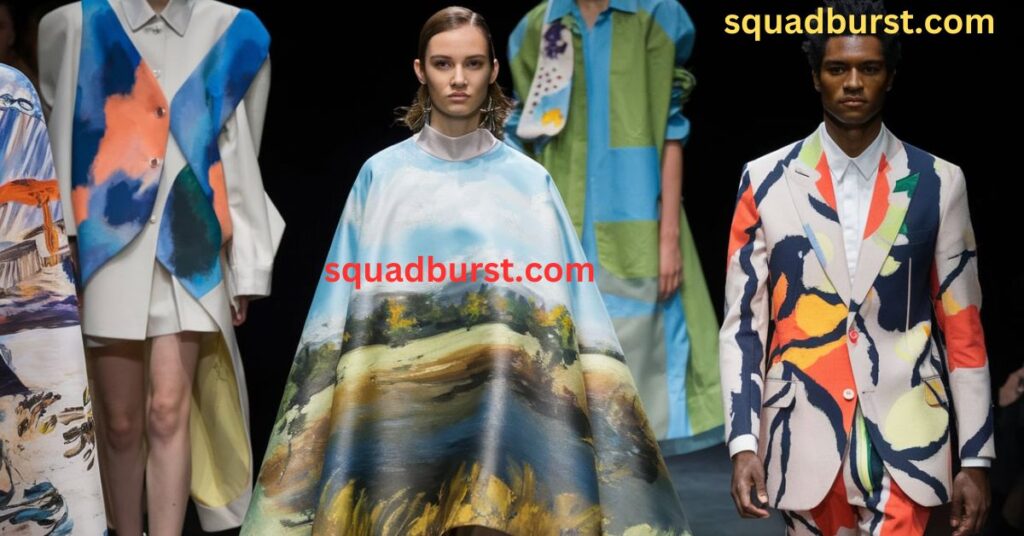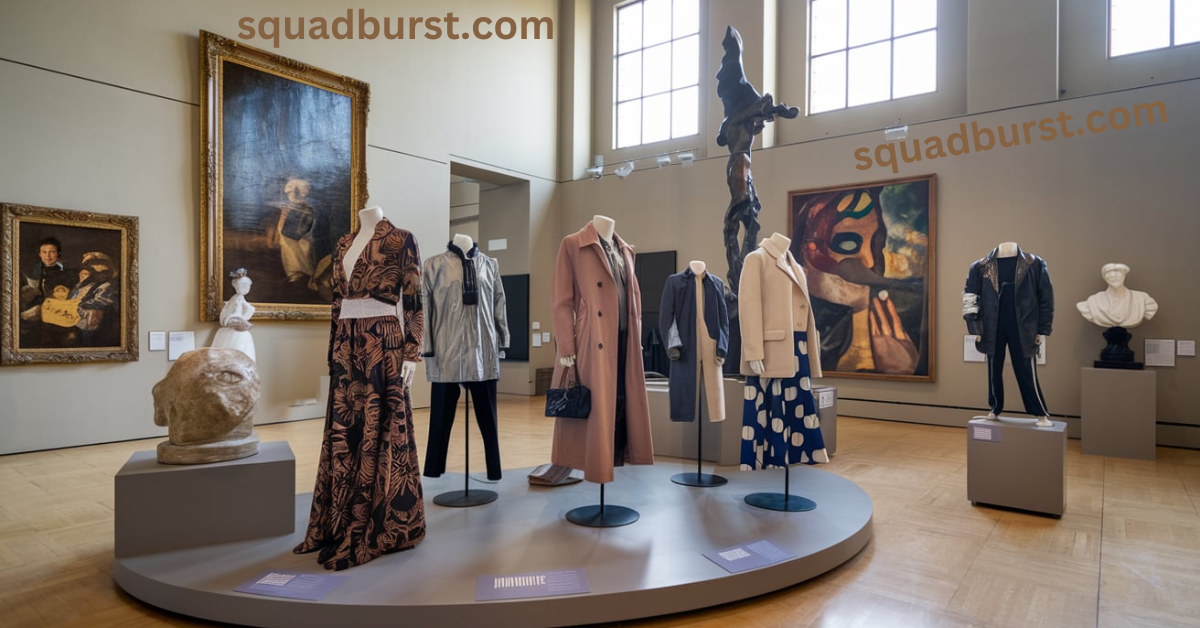Fashion has always been more than just clothing—it’s a living art form, a cultural dialogue, and a reflection of societal shifts. As garments transition from the runway to the gallery, the question arises: Does Fashion Belong in an Art Museum? This debate challenges traditional definitions of art and opens up conversations about the intersection of creativity, identity, and cultural relevance.
The idea of placing fashion in art museums isn’t just about showcasing stunning designs; it’s about exploring how clothing can provoke thought, inspire movements, and mirror humanity. By asking “Does Fashion Belong in an Art Museum?”, we delve into the duality of fashion as both functional and artistic—blurring the lines between utility and creativity in ways that rival the most celebrated masterpieces.
From the avant-garde collections of Rei Kawakubo to Issey Miyake’s innovative pleats, fashion tells stories as profound as any sculpture or painting. The question, Does Fashion Belong in an Art Museum?, invites us to reimagine garments as works of art, deserving of the same reverence as Michelangelo’s masterpieces or Van Gogh’s canvases.
Understanding Fashion as Art
Fashion often blurs the line between functional design and artistic expression. Iconic designers like Rei Kawakubo, Issey Miyake, and Alexander McQueen create garments that transcend utility, offering thought-provoking commentaries on identity, gender, and society. The artistic value of fashion lies in its ability to tell stories, evoke emotions, and reflect cultural movements—qualities akin to traditional art forms like painting or sculpture.
Key Characteristics Linking Fashion and Art
- Creativity: Fashion design requires immense innovation and artistic vision.
- Cultural Reflection: Like art, fashion captures and critiques societal trends.
- Aesthetic Appeal: Haute couture, with its intricate craftsmanship, rivals the beauty of traditional artwork.

Case Study: “Heavenly Bodies: Fashion and the Catholic Imagination”
The Metropolitan Museum of Art’s Costume Institute hosted the Heavenly Bodies exhibit, combining couture pieces with religious artifacts. It became the Met’s most-visited exhibition, highlighting the public’s appetite for fashion as art and its ability to provoke thought.
The Museum Perspective
From a museum’s standpoint, displaying fashion challenges traditional notions of what constitutes art. Institutions like the Indianapolis Museum of Art and London’s Victoria and Albert Museum (V&A) have embraced fashion exhibitions, citing their ability to attract diverse audiences and foster cultural dialogue.
Benefits of Fashion Exhibitions in Museums
- Increased Attendance: Fashion exhibits often draw crowds that may not visit traditional art displays.
- Broadened Appeal: These exhibitions bridge the gap between popular culture and fine art.
- Enhanced Revenue: High-profile fashion displays can boost ticket sales and merchandise purchases.
Comparison of Attendance Statistics
| Exhibition | Venue | Attendance |
|---|---|---|
| Heavenly Bodies | Metropolitan Museum | 1.7 million |
| Alexander McQueen: severe Beauty | Victoria and Albert Museum | 660,000 |
| Christian Dior: Designer of Dreams | V&A | 594,994 |
Challenges Museums Face
- Conservation: Preserving delicate fabrics and materials requires specialized care.
- Criticism: Some purists argue that fashion exhibitions prioritize commerce over art.
- Curatorial Balance: Integrating fashion into museum collections without compromising artistic integrity is a delicate task.
The Fashion House Perspective
From the perspective of fashion houses, museum exhibitions offer opportunities to elevate their brands to the realm of high art. Designers can showcase their work in a context that highlights creativity over commercialism.

Why Fashion Houses Partner with Museums
- Legacy Building: Exhibitions immortalize designers’ contributions to culture.
- Cultural Prestige: Aligning with esteemed museums enhances a brand’s image.
- Public Engagement: Exhibitions allow broader audiences to experience haute couture.
Case Study: Issey Miyake’s “Pleats Please Guest Artist Series”
Issey Miyake collaborated with contemporary artists like Cai Guo-Qiang, whose gunpowder artworks were integrated into Miyake’s pleated garments. These designs, displayed in museum settings, exemplify the intersection of art and fashion.
Display Strategies for Fashion in Museums
Presenting fashion in museums requires innovative curatorial approaches to ensure garments are displayed as art rather than retail products.
Techniques for Effective Presentation
- Contextual Pairing: Positioning garments alongside related artworks or artifacts to tell a cohesive story.
- Interactive Displays: Incorporating multimedia elements to engage visitors.
- Spatial Design: Utilizing gallery space to highlight the structural artistry of garments.
Example: The “Body Meets Dress, Dress Meets Body” Collection
Rei Kawakubo’s Body Meets Dress collection, known for its avant-garde shapes and gender-neutral designs, was displayed at the Met with minimalistic backdrops, emphasizing the artistry and provoking critical thought about body image and fashion norms.
Key Elements of Fashion Displays
+-----------------------+
| |
| Contextual Pairing |
| |
+-----------------------+
|
+-----------------------+
| |
| Multimedia Usage |
| |
+-----------------------+
|
+-----------------------+
| |
| Spatial Arrangement |
| |
+-----------------------+Problematic Aspects of Museum-Designer Collaboration
While the collaboration between museums and designers has many benefits, it also raises ethical and practical concerns.

Commercialization Concerns
Critics argue that fashion exhibits often prioritize popular appeal over artistic depth, risking the commercialization of museums.
- Example: Some felt the Heavenly Bodies exhibit was more about brand visibility than cultural exploration.
Conservation Challenges
- Fabrics degrade faster than traditional art materials, requiring advanced conservation methods.
- Frequent exhibitions can lead to wear and tear, threatening historical garments.
Accessibility Issues
High-profile exhibitions may cater more to elite audiences, alienating visitors seeking inclusive experiences.
FAQs
Is Fashion Considered Art?
Fashion is increasingly recognized as an art form, especially when it involves creative innovation and cultural commentary.
Which Museums Showcase Fashion?
Prominent museums include:
- Metropolitan Museum of Art (New York)
- Victoria and Albert Museum (London)
- Indianapolis Museum of Art
What Are Some Iconic Fashion Exhibits?
- severe Beauty (Alexander McQueen)
- Heavenly Bodies (Met Costume Institute)
- Christian Dior: Designer of Dreams (V&A)
Conclusion
Fashion holds a unique place at the crossroads of creativity, culture, and history. Exhibits like Heavenly Bodies and severe Beauty show how garments can inspire, challenge, and provoke, much like traditional art. Asking, “Does Fashion Belong in an Art Museum?”, highlights the evolving role of museums as spaces for all forms of artistic expression. Fashion isn’t just wearable design; it reflects identity, innovation, and societal change, making it worthy of a place among timeless masterpieces.
By showcasing fashion in museums, we recognize its power to engage audiences and tell meaningful stories. However, it also sparks debates on art’s boundaries and the risk of commercialization. The question, “Does Fashion Belong in an Art Museum?”, invites us to embrace the blending of high art and popular culture, redefining what museums can and should represent in the modern world.

Olivia Jacks is the dynamic voice behind SquadBurst.com, bringing her passion for fashion and sports to life. With a knack for storytelling and a deep appreciation for style and athleticism, Olivia creates engaging content that resonates with readers across diverse interests.






